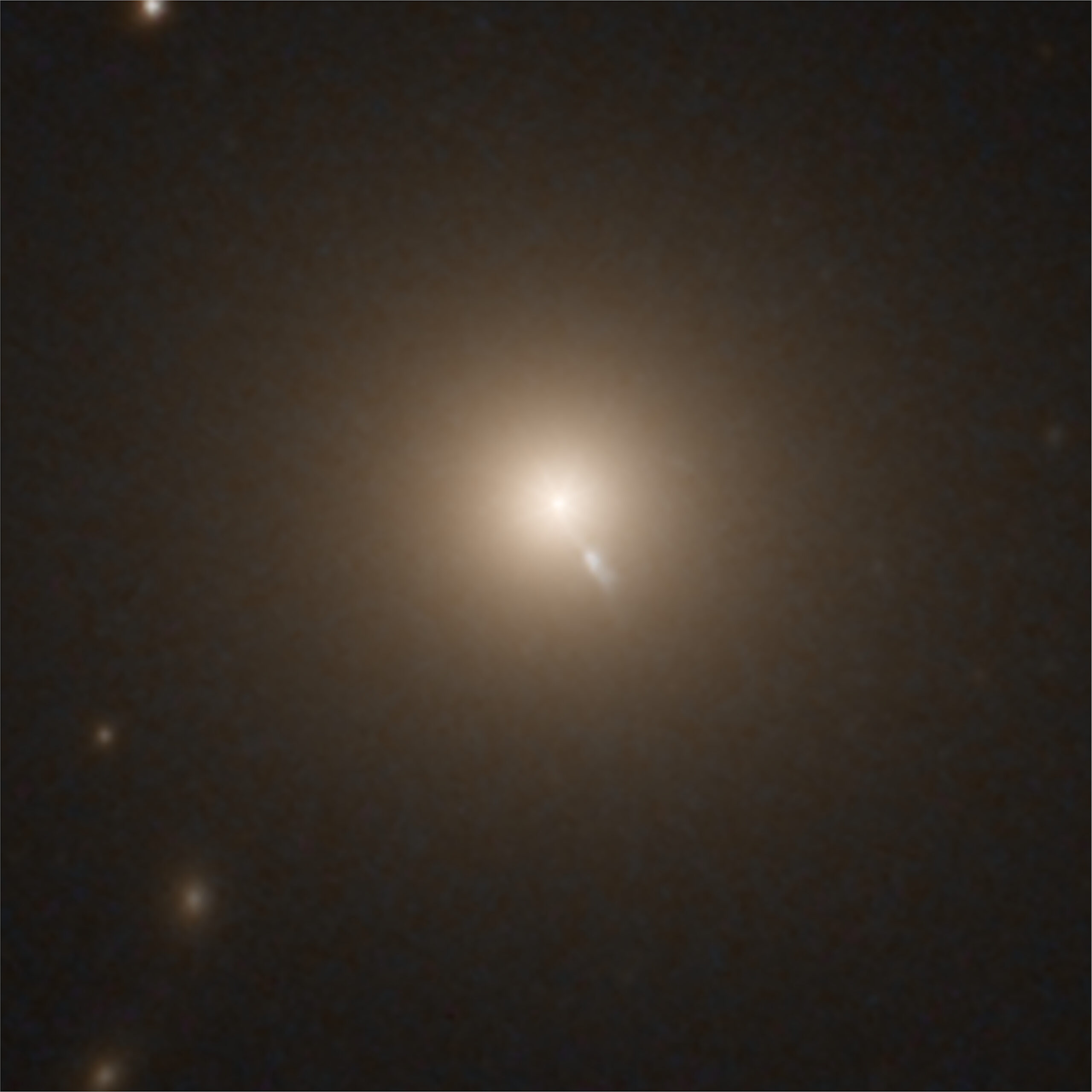Messier 87 și jetul de la gaura neagră de Tiberiu Savin

O fotografie lunară realizată de colegul nostru Tiberiu Savin
5 aprilie 2024
Abell 1185 și Arp 105 de Enzo Pedrini
15 aprilie 2024Data publicării 15 aprilie 2024
M87 este o galaxie situată în constelația Fecioarei și se află la aproximativ 50 de milioane de ani-lumină distanță. Are un diametru de aproximativ 132000 de ani-lumină și conține cateva trilioane de stele.
Ca structură, M87 nu este foarte interesantă deoarece apare ca un sfera, fără brațe spiralate sau benzi de praf.
Ceea ce face M87 interesantă și faimoasă este gaura neagră supermasivă din centrul galaxiei. Ultimele măsurători estimează masa acestei găuri negre la aproximativ 6,3 miliarde de mase solare. Pentru comparație, masa lui Saggitarius A*, gaura neagră din centrul Căii Lactee, este de doar 4,3 milioane de ori masa Soarelui.
Această gaură neagră a devenit, de asemenea, celebră în ultimii ani datorită celor de la Event Horizon Telescope, care în 2019 au dezvăluit prima imagine a unei găuri negre pe care omenirea a facut-o vreodată, iar aceasta a fost cea din centrul galaxiei M87.
Desigur, nu putem vedea gaura neagră în această imagine, dar putem observa ceva care vine de la ea, și anume un jet din apropierea centrului galaxiei. Am inclus si niște imagini mărite care pot părea puțin pixelate, unde se poate observa mai bine jetul.
Jetul este format din particule cu viteză mare, în principal electroni, accelerați la aproape viteza luminii. Se consideră că aceste particule provin din vecinătatea event horizonului găurii negre, granița dincolo de care nimic, nici măcar lumina, nu poate scăpa. Mecanismele responsabile pentru accelerarea acestor particule la viteze atât de mari este încă sub investigație, dar probabil implică câmpuri magnetice puternice și procese care au loc în discul de acreție care înconjoară gaura neagră. Lungimea jetului este de aproximativ 5000 de ani-lumină, iar viteza acestor particule este de aproximativ 80-85% din viteza luminii.
Echipament:
Telescop Skywatcher: 200/800
Montură: EQ6R
Camera: ZWO ASI 533MC
Ghidaj: ZWO ASI 120MM & ZWO OAG
Corector de coma Baader 2″
Am făcut 255 de expuneri de câte 2 minute fiecare pentru un timp total de integrare de 8,5 ore. Datele au fost procesate folosind Pixinsight și GIMP. Mentionez că această poză a fost făcută din București, de la mine din curte.
Autor Tiberiu Savin, Astroclubul București
M87 is a galaxy located in the Virgo constellation and is located approximately 50 million light years away. It has a radius of about 132000 light-years and contains several trillion stars.
As a structure M87 is not particularly interesting as it appears as a spheroid, without any spiral arms or dust lanes.
What makes M87 interesting and famous is the supermassive black hole located the center of the galaxy. Latest measurements estimate the mass of this black hole at approximately 6.3 billion solar masses. For comparison the mass of Saggitarius A* (the black hole in the center of milky way) is only 4.3 million times the mass of the Sun.
This black hole has also become famous in recent years because of the Event Horizon Telescope, which in 2019 unveiled the first of a black hole humanity has ever taken, and it was the one at the center of M87.
We obviously cannot see the black hole in this image, but we do see something coming from it, and that is a jet near the core of the galaxy. I’ve included some zoomed in images that looked kinda pixelated where you can see it.
The jet is a high-speed stream of particles, mainly electrons, accelerated to nearly the speed of light. These particles are thought to originate from the vicinity of the black hole’s event horizon, the boundary beyond which nothing, not even light, can escape. The exact mechanism responsible for accelerating these particles to such extreme speeds is still under investigation, but it likely involves strong magnetic fields and processes occurring within the accretion disk surrounding the black hole. The length of the jet is approximately 5000 light-years and the speed of these particles is around 80-85% of the speed of light.
Equipment:
Telescope Skywatcher: 200/800
Mount: EQ6R
Camera: ZWO ASI 533MC
Guiding: ZWO ASI 120MM & ZWO OAG
Baader 2″ comma corrector
I took 255 exposures of 2 minutes each for a total integration time of 8.5 hours. Interestingly enough this image was taken from my backyard in Bucharest. Data was processed using Pixinsight and GIMP.
Author Tiberiu Savin, Bucharest Astroclub





